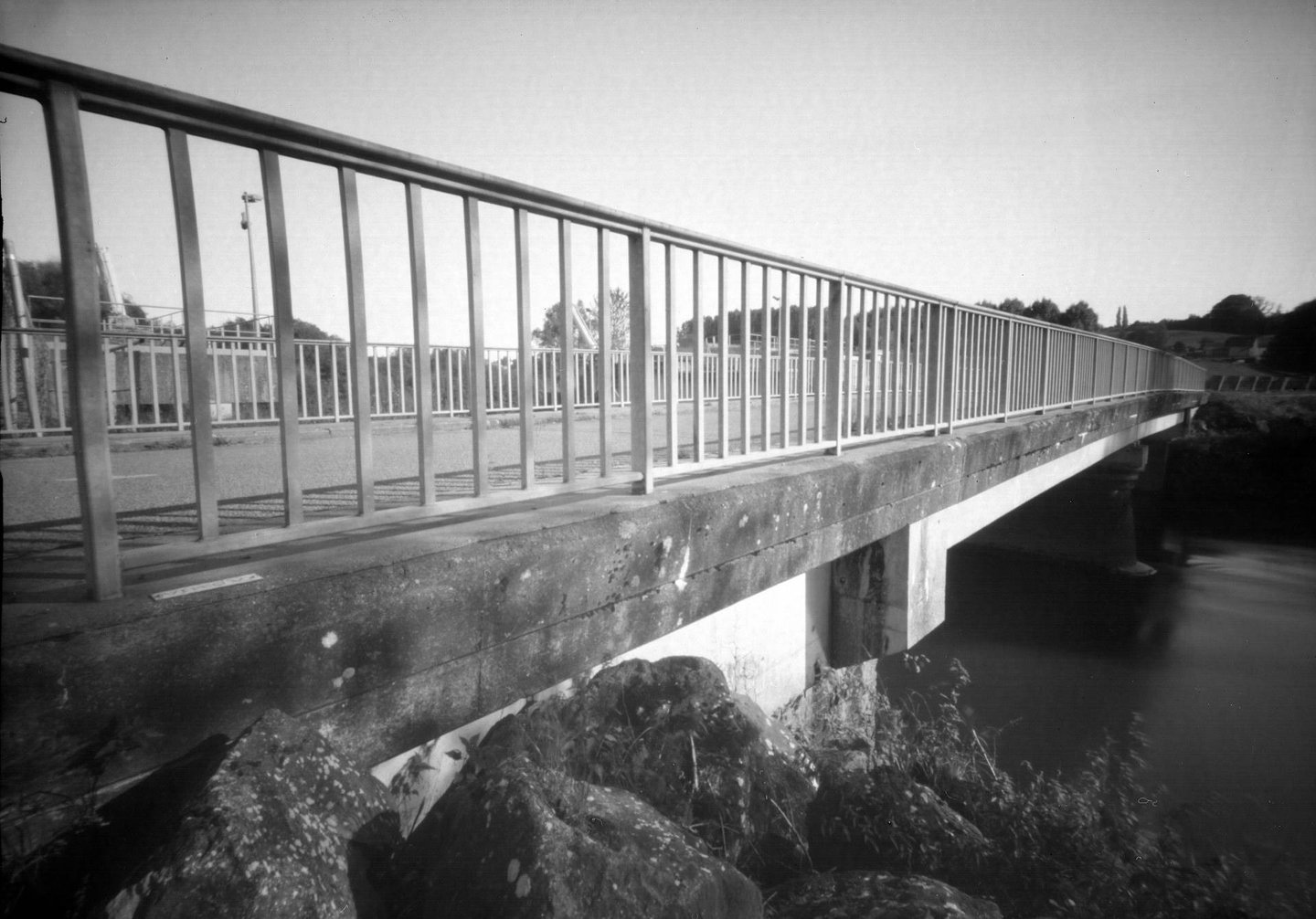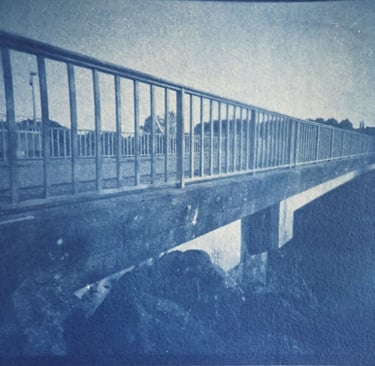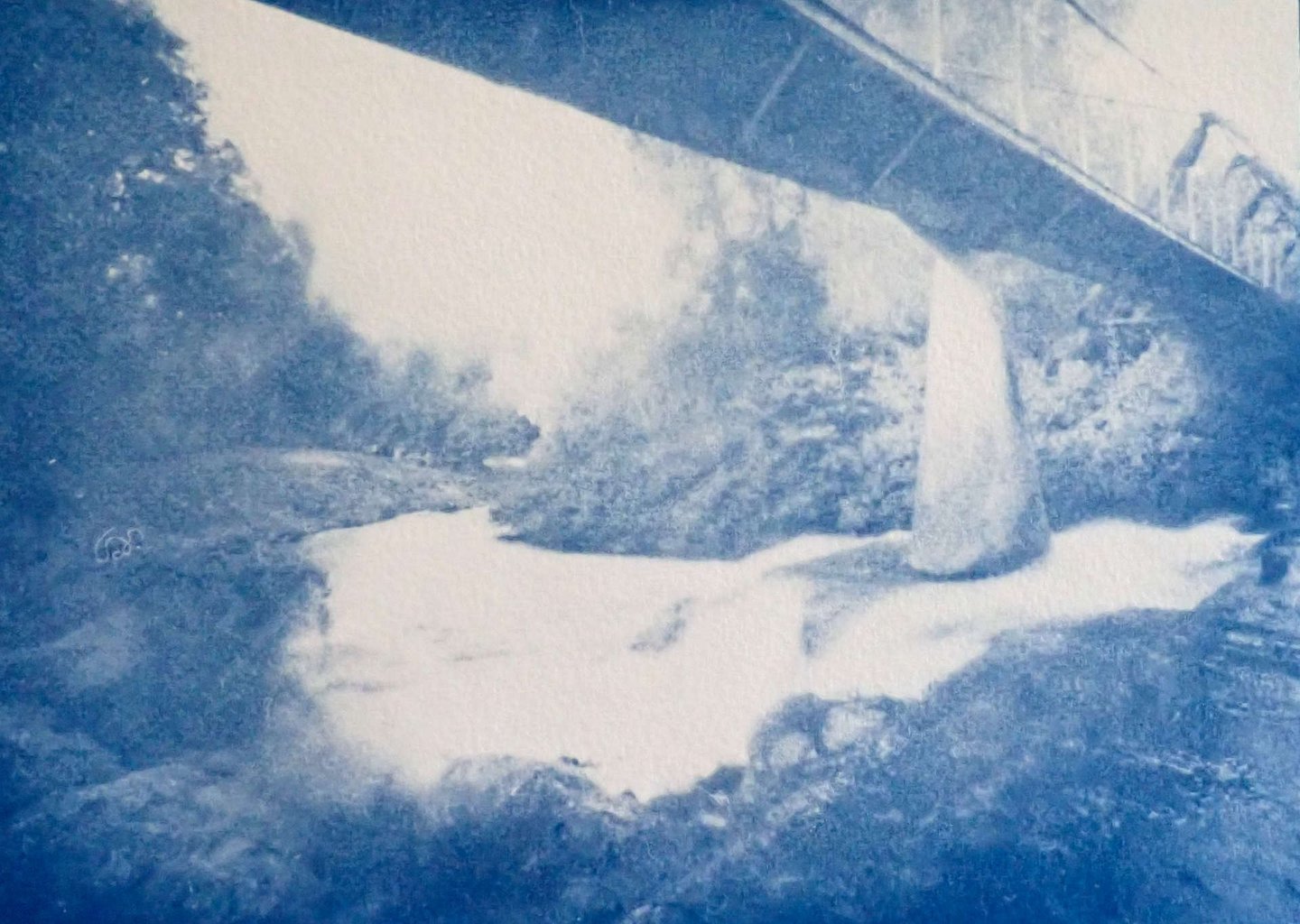The cyanotype, natural child of the pinhole camera?
The photo paper pinhole camera obviously only produces negatives unless you use reversible paper like the Harman direct positive. To my knowledge it is limited by the size of 8x10 inches, or approximately 20 x 25 cm. In this format its price reaches more than 5 euros per sheet. To obtain a positive the simplest solution is scan or take a photo of the negative and digitally invert it. Another solution is contact printing on photo paper with a cost price around 1 euro for 18x24 cm. But there remains another solution, cheaper and even more “vintage”: the cyanotype.
It is a process that offers many advantages.
My favorite is that you can prepare the solution and the support simply in the shade or under LED lighting which has now become the standard. Unlike a silver support, the cyanotype only reacts to UV and even UV-A. Preparing the sensitive solution and the support does not require a dark room or even safe light, we can see perfectly what we are doing
Second advantage, its cost: If you buy it in ready-made bottles you get 600 ml for around 30 euros and with this solution you can prepare well over a hundred A4 format papers. There remains the solution of playing the little chemist, it is even cheaper. Necessary material? A measuring spoon and a brush, that's all. Also don't forget a cloth that is not afraid of stains, once the product is placed somewhere it will inevitably give blue stains sooner or later. This applies to your hands, your clothes, your work surface, evrything. In the advantages section, this process is very non-toxic, you can pour your baths into the sewers without fear of the slightest pollution. It's more ecological than film.
3rd advantage, you decide the size of the print run. Do you prefer postcard format? No problem. Do you prefer the 100x100 cm format? If you have the paper, no problem either. Since it is a liquid emulsion you can “cyanotype” anything, wood, fabric, this process is open to all experiments.
But there are not only advantages.
Like everything in photography and life in general, it's all about balancing pros and cons.
1st disadvantage, the process only natively produces monochrome photos tinted with blue, more precisely cyan blue, hence its name. There are solutions for dyeing the print and modifying this color but personally I like these cyan tones and before attempting any changes I must first roughly master the basic technique.
2nd disadvantage, it is an extremely slow process. In terms of ISO we must be well below 0.1 ISO. Slow from slow! For a photogram, allow at least 10 minutes in direct sunlight to obtain an interesting trace. There are pioneers like Nicole Small (check out her YouTube channel) who have had interesting results by placing sensitized paper in a box with a magnifying glass, but patience is essential. Search "in camera cyanotype" in Youtube and you will get some examples. What about the pinhole camera with sensitized paper instead of photo paper? This has obviously been tried by a few courageous people but the exposure times are incompatible, it would take a few full days to obtain the beginning of a trace. But then why this catchy title?
Because it's the perfect process for obtaining positive contact prints with incredible charm. I like this aesthetic and it allows me to link cyanotype and pinhole, two processes generally considered incompatible.
This time we are no longer talking about 10 to 15 minutes of exposure time but rather 2 to 4 hours of exposure to direct sunlight depending on the paper used. If you use a negative in the form of transparent film the exposure time is much shorter but here I am exposing Ilford RC photo paper obviously much less transparent than film. I was even (pleasantly) surprised that it worked so well with photo paper.
Example: Reverse scan


Cyanotype contact printing:


Another example of contact printing:


The photos of the cyanotype prints were taken on the fly in the kitchen.
This process requires a photo with good contrast, if the photo is low contrast the print will be too, like any contact print. To obtain stronger contrasts I will try to use the pinholes with raw paper, not pre-flashed.
It is a process that works mainly by “trial and errors”. At first failures are common, then it can happen again. If you are looking for a 100% reliable process, move on, this photographic method is not for you. To ensure a more precise exposure time than a sunny sky with its share of possible clouds, curious critters that come to rest on your paper and other random events, a UV-A lamp is perhaps the solution. Particularly in winter or this year when we are breaking records for rainfall and therefore low sunshine in any case in the North-Eastern part of France. To obtain prints that are reproducible or almost reproducible (it's still cyanotype with its share of surprises) it is likely that I will opt for this solution very soon.
